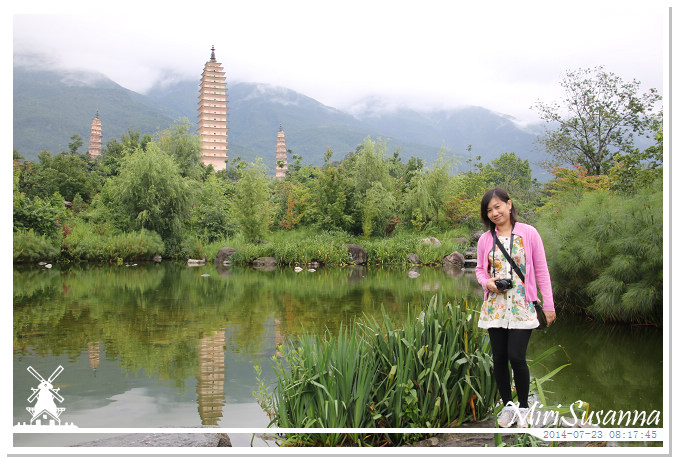
早上七點半,巴師傅到酒店接了我們和小洪,就開始在五朵金花的故鄉--大理的一日遊。這天的行程是:崇聖寺、大理古城、蝴蝶泉和洱海。
July 23th, we have an one day trip at Dali and visited the Chongsheng Temple, Dali Old City, Butterfly Spring and Erhai Lake.
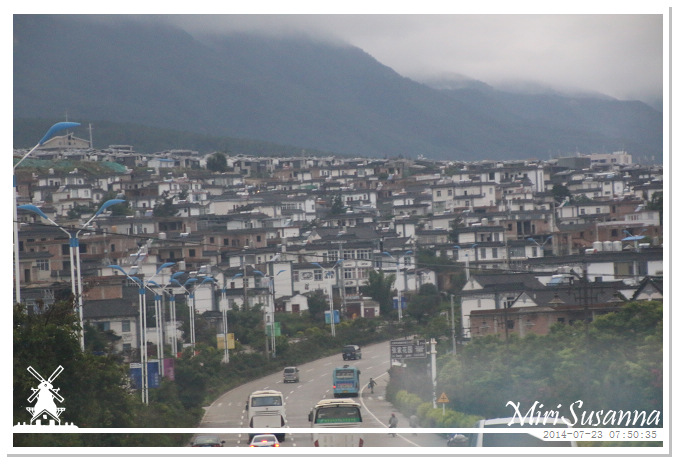
往崇聖寺的路上。
On the way to Chongsheng Temple.
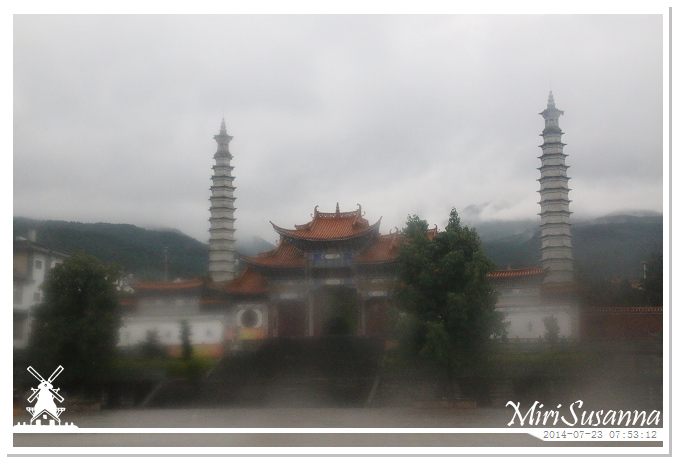

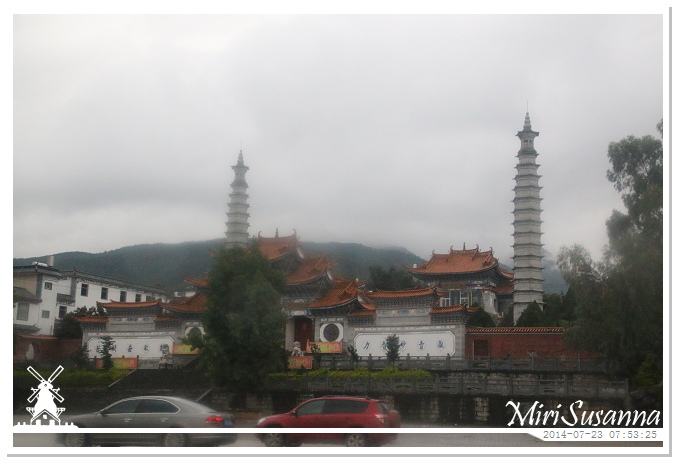
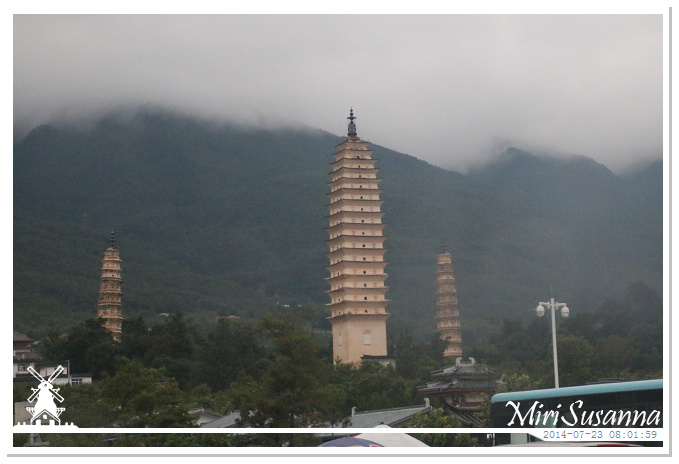
崇聖寺的三塔進入眼簾。
The Tree-Pagoda of Chongsheng Temple.

Entrance.

Chongsheng Temple & Three-pagoda Cultural Tourist Area.
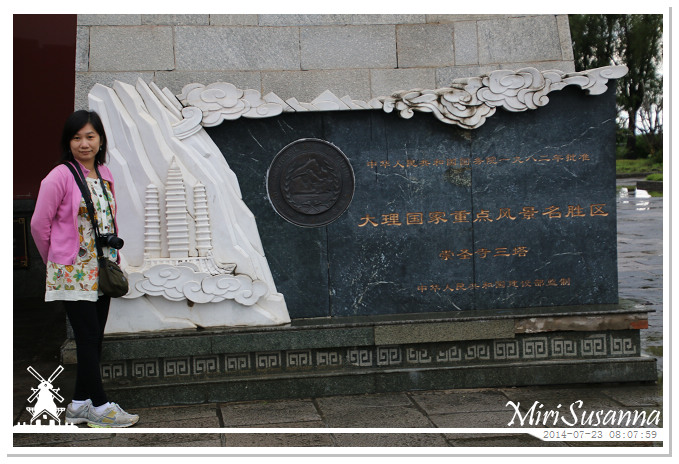

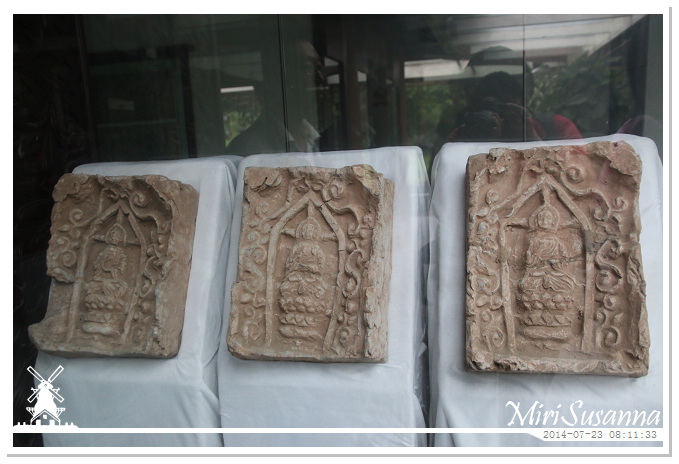
唐代南詔國之塔磚。
Nanzhao state pagoda Bricks at Nanzhao Kingdom in Tang Dynasty.

這三塊塔磚是在造塔磚的過程中剩下的三塊,一直被藏在塔頂,被發現後才列在展覽室。
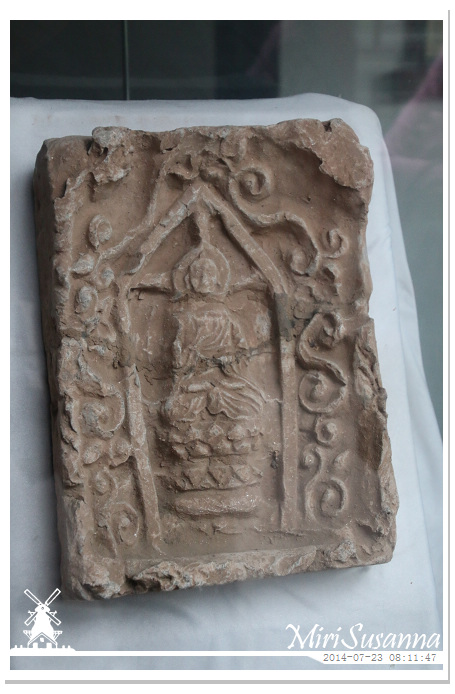
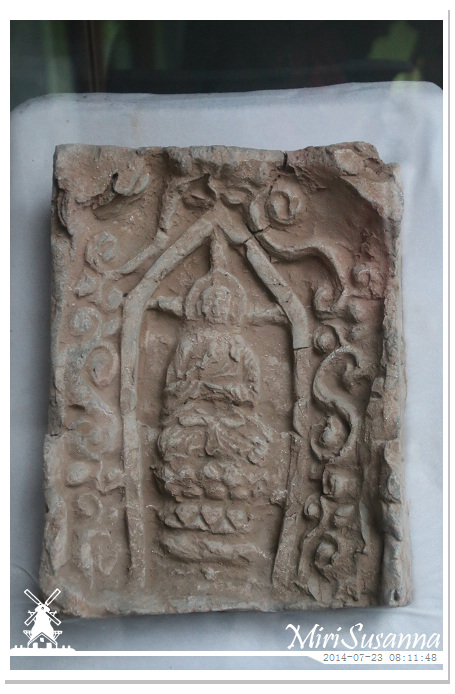

唐代南詔國之實心銅佛像。
Solid copper Budda statue at Nanzhao Kingdom in Tang Dynasty.
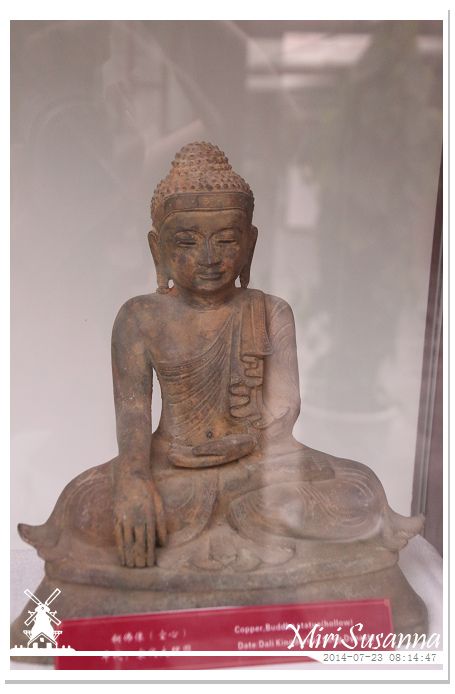
宋代大理國之空心銅佛像。
Hollow copper Buddha statue at Dali Kingdom in Song Dynasty.
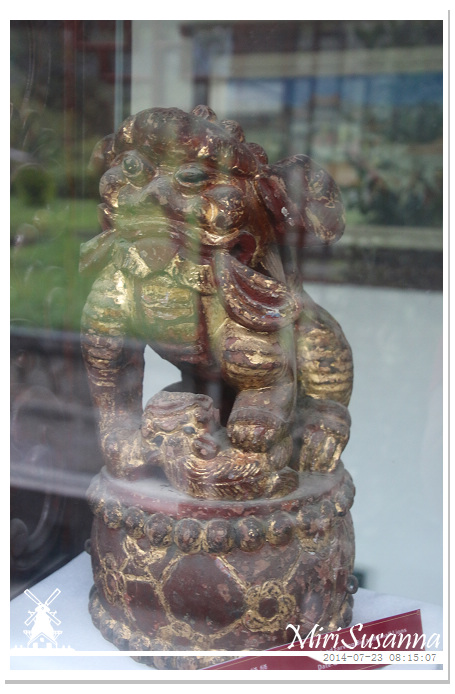
清代木雕太獅獅。
Wood carving Gig and small Lions at Qing Dynasty.
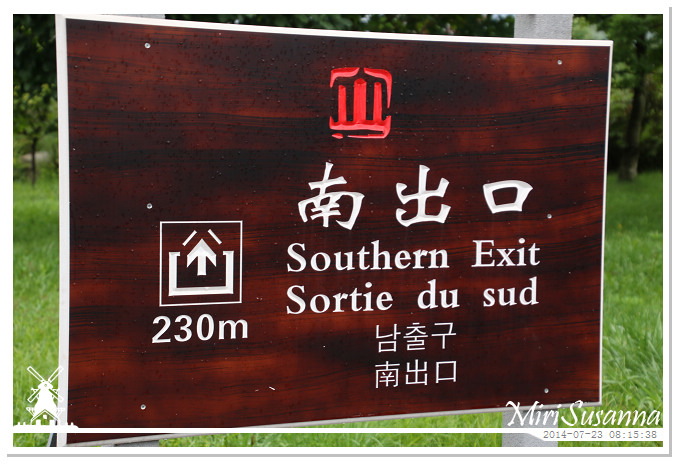
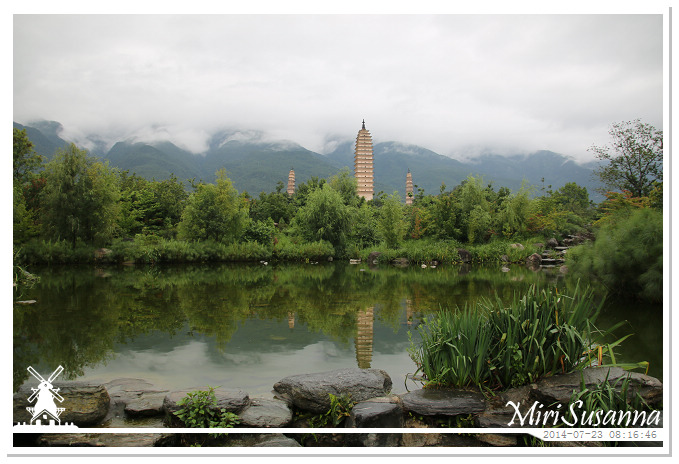
崇聖寺三塔的風光,背景為蒼山。
Sight of the Three-pagoda.

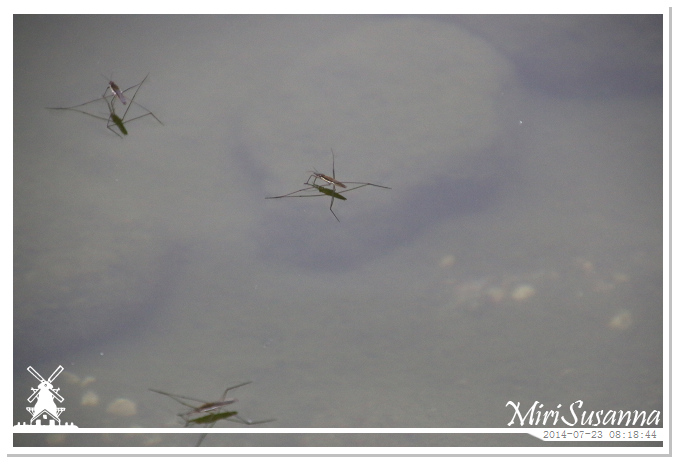
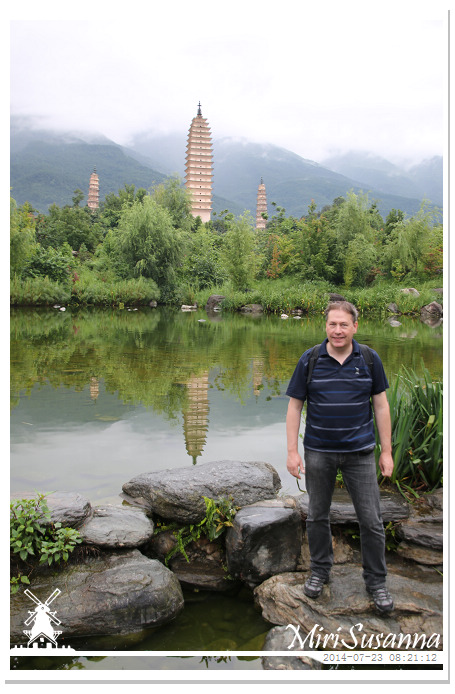
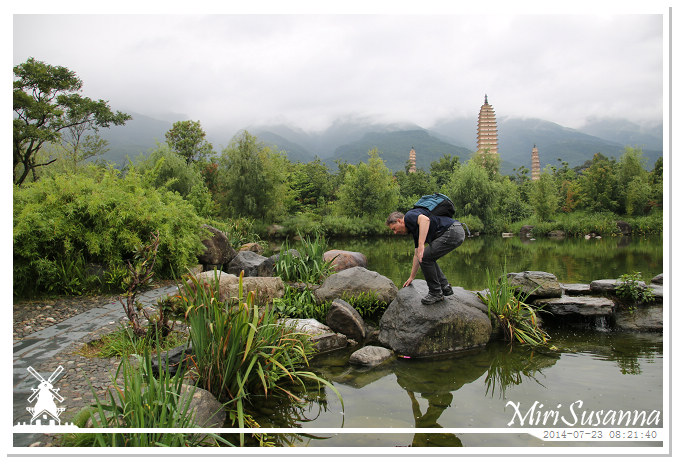
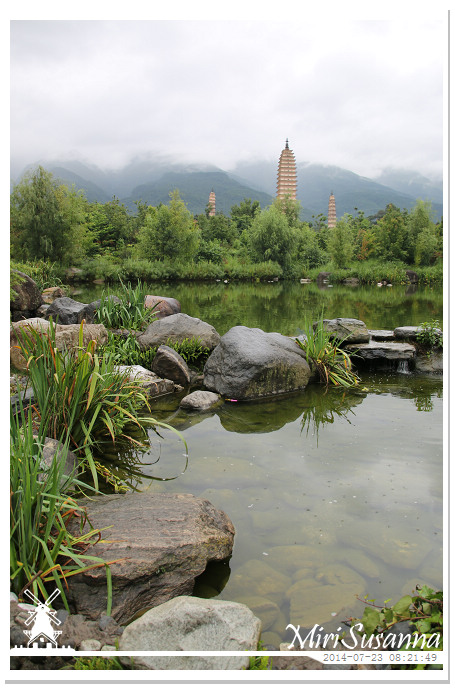
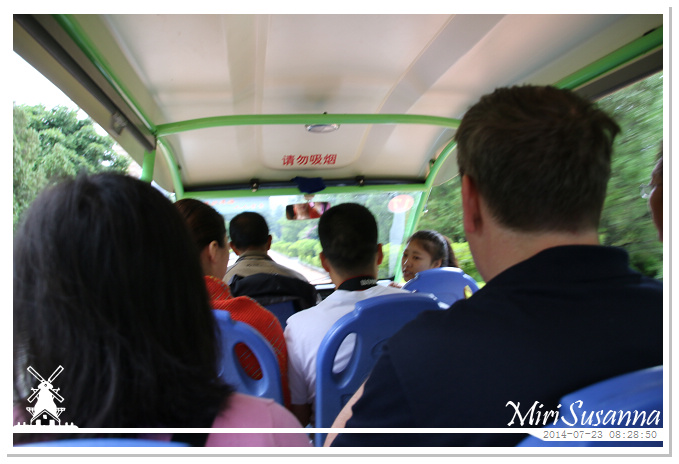
乘電瓶車往崇聖寺。
Going to the Chongsheng Temple.
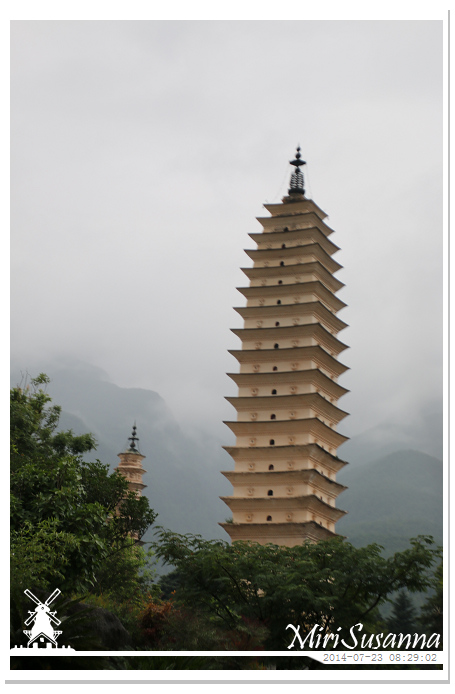
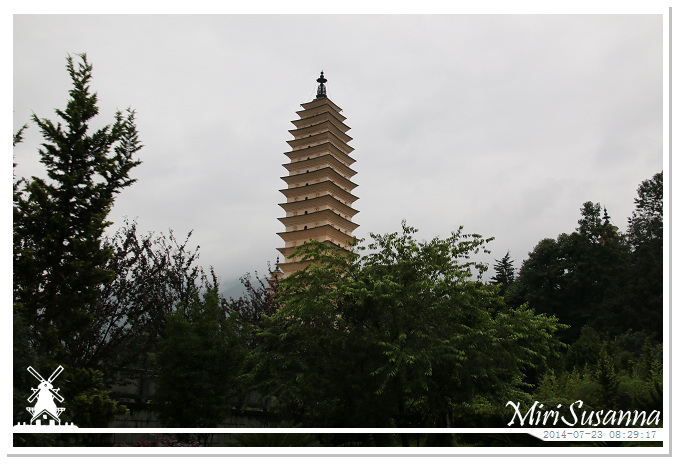

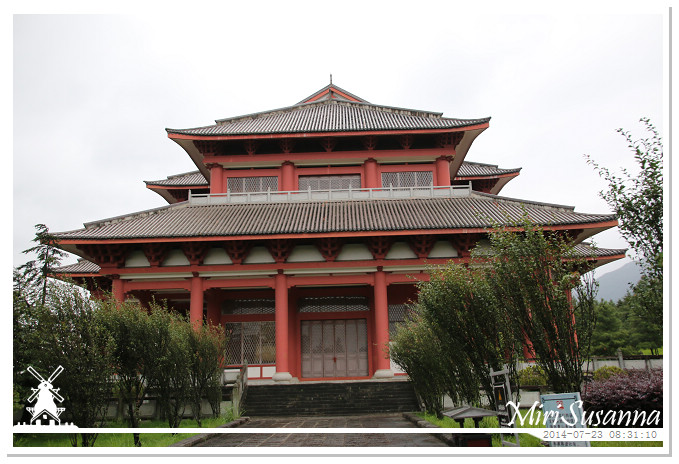

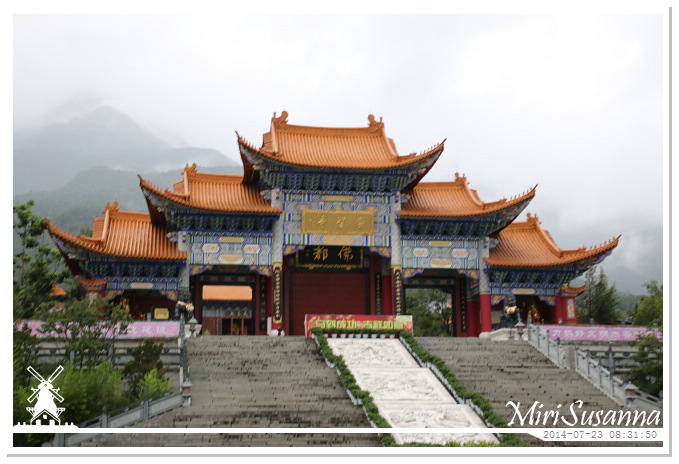
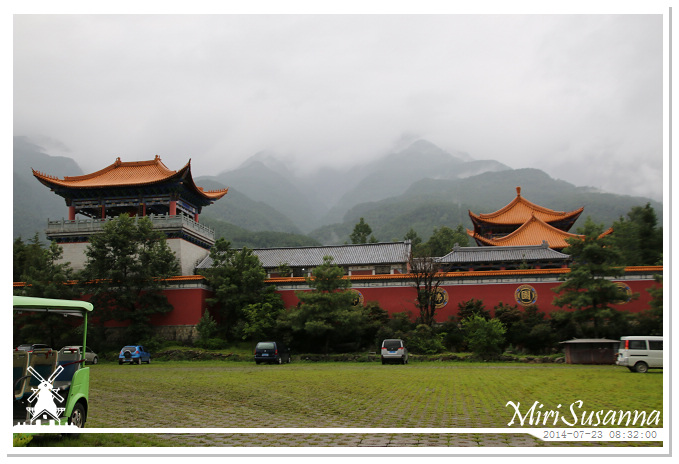
關於崇聖寺與三塔的介紹,可參考文末轉載的資料。
You can find the introduction of the Chongsheng Temple and Three-pagoda at the end of this post.
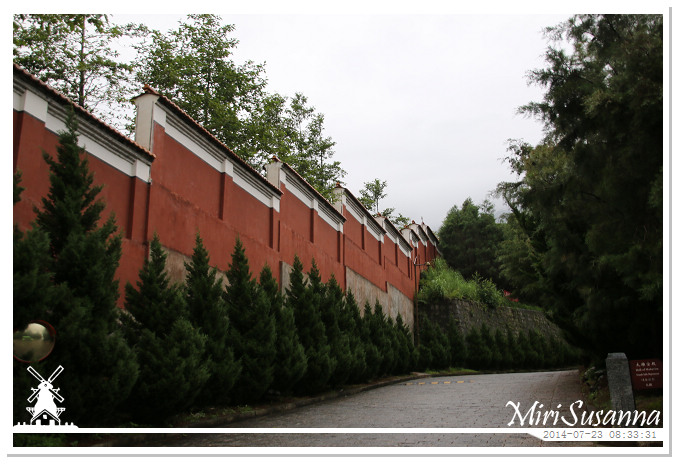
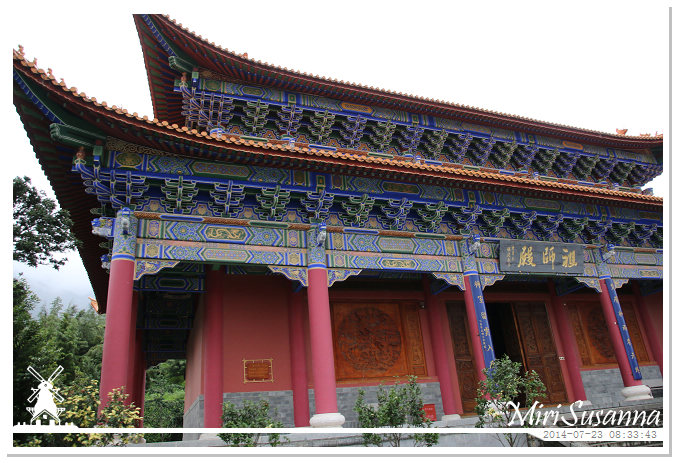
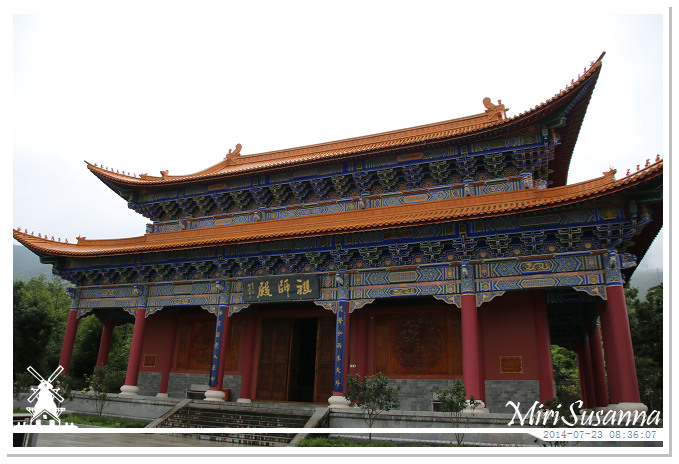
祖師殿。
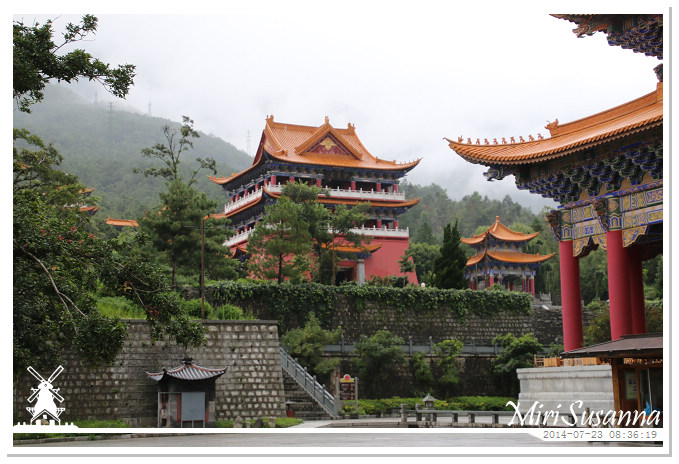
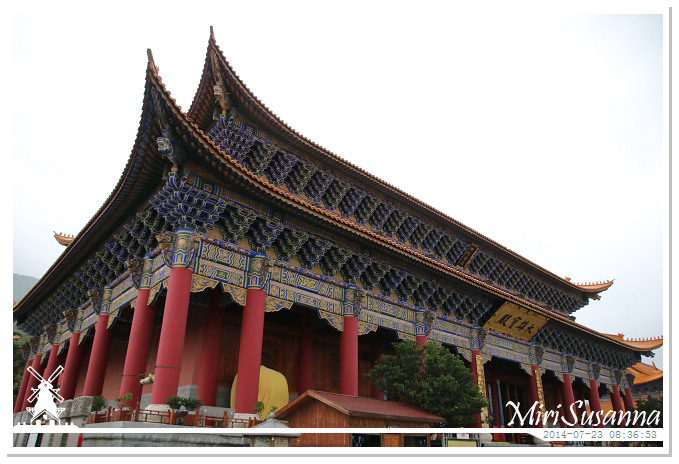
大雄寶殿,是仿故宮的太和殿而建。

菩提樹。
Bodhi tree.
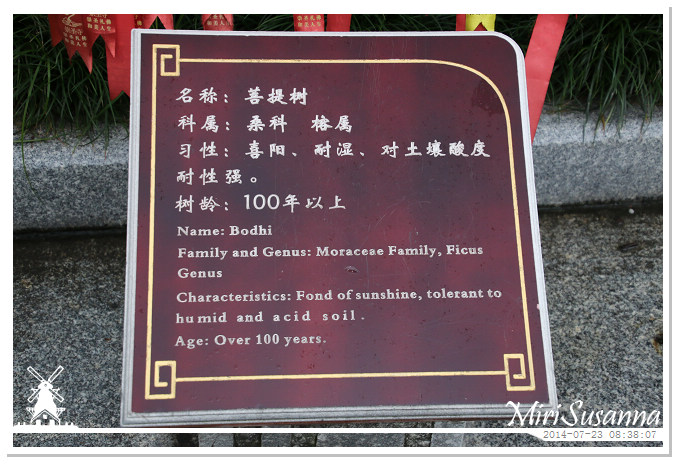



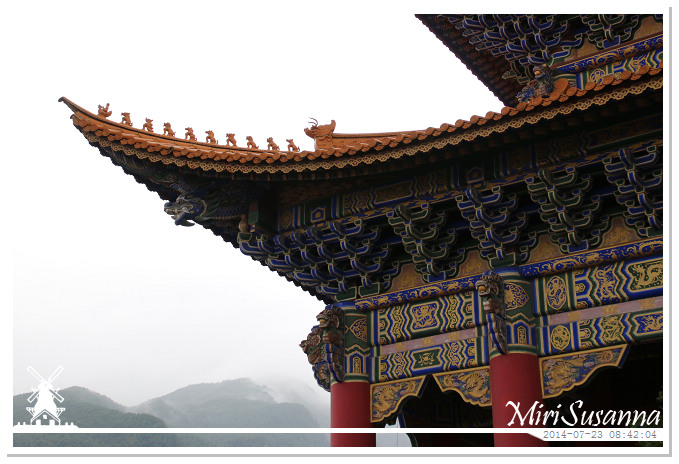

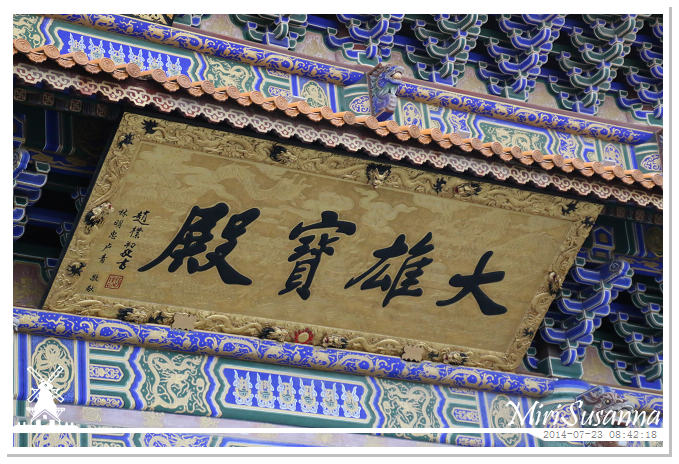
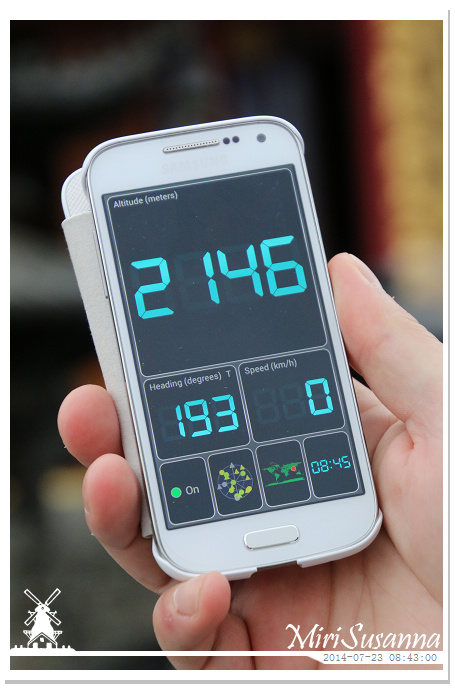

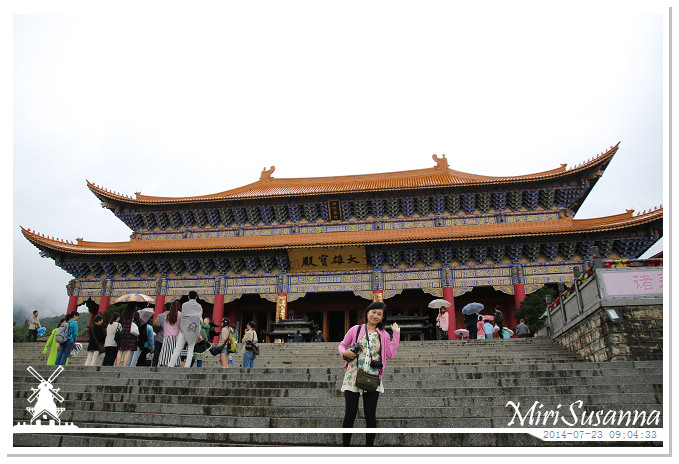


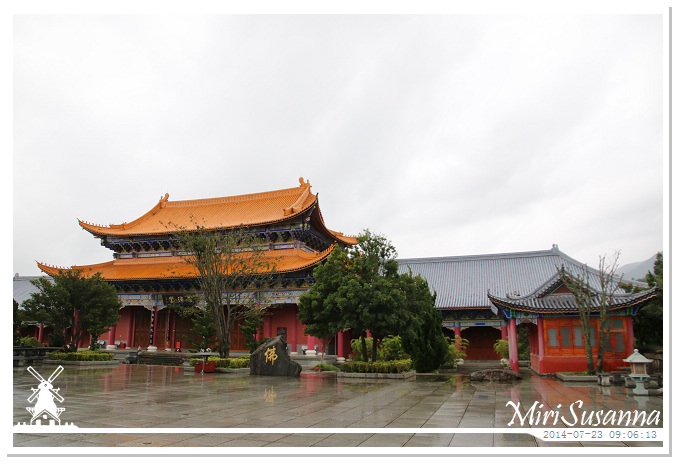
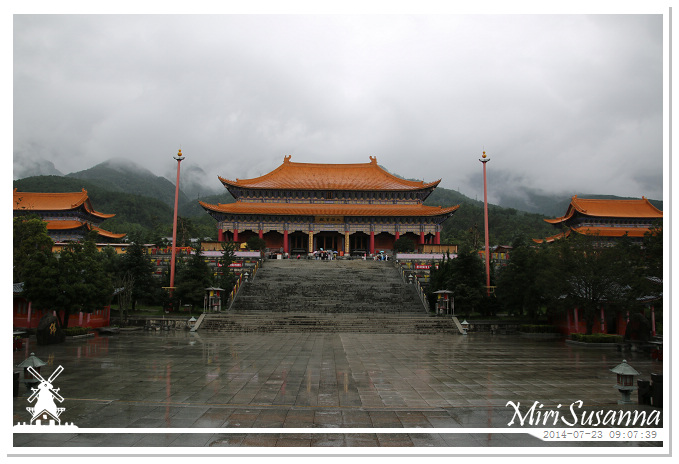
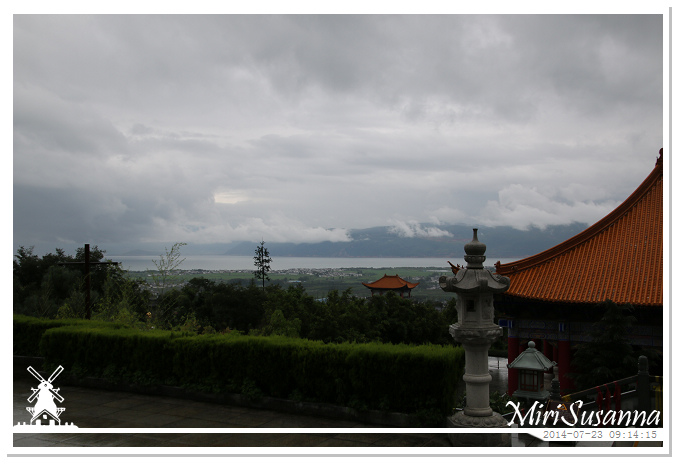
遠觀洱海。
Erhai Lake.
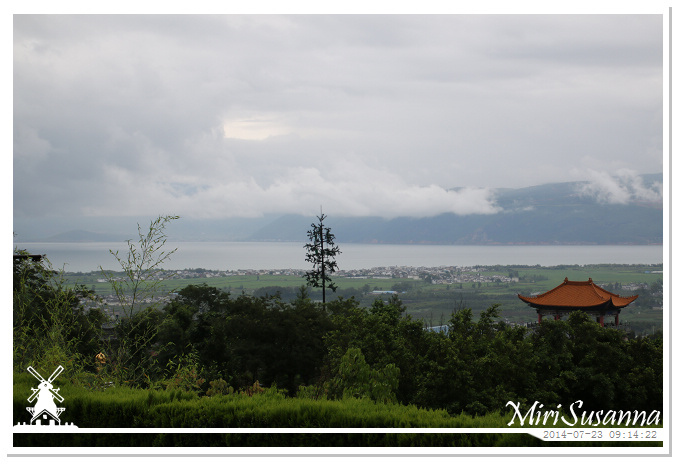
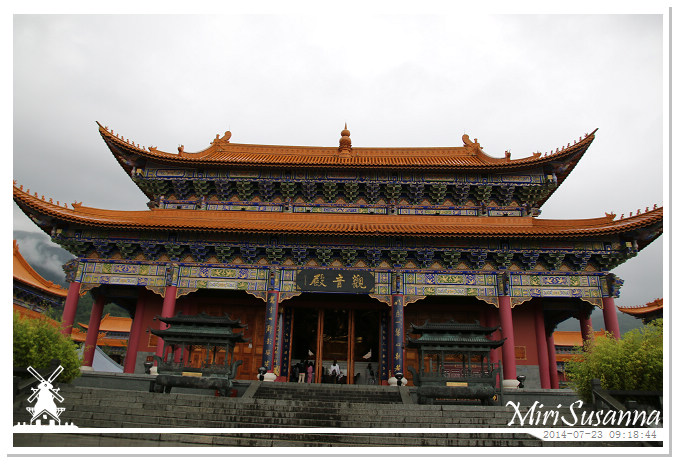
觀音殿。
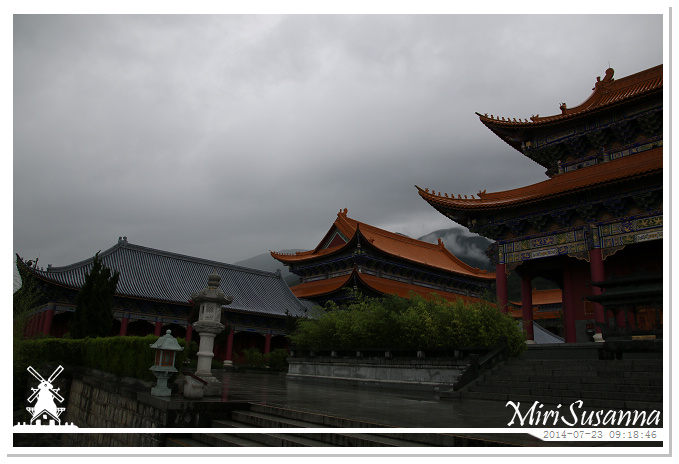

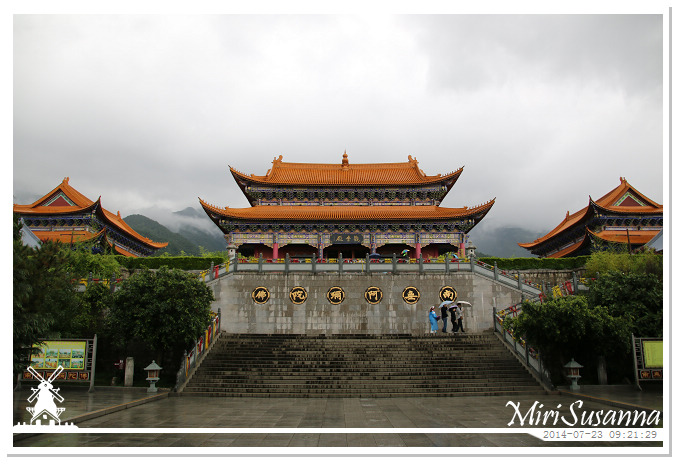
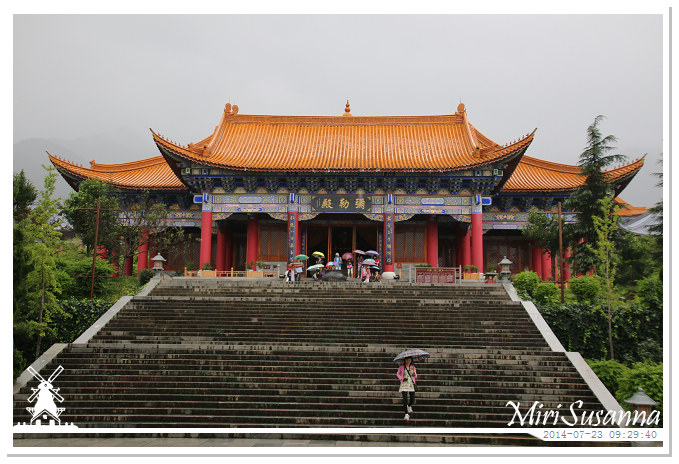
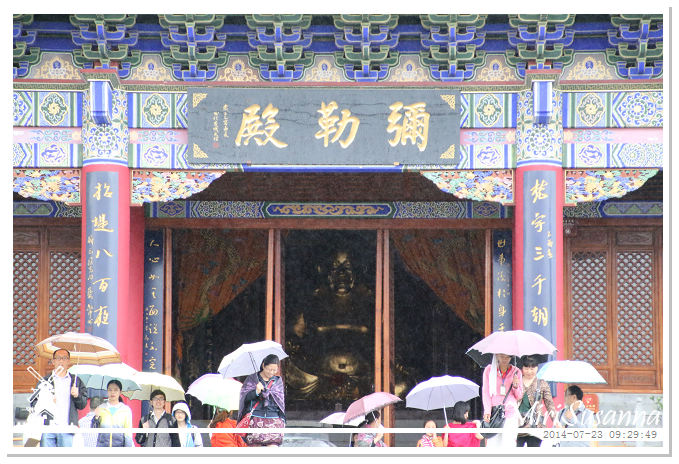
彌勒殿。
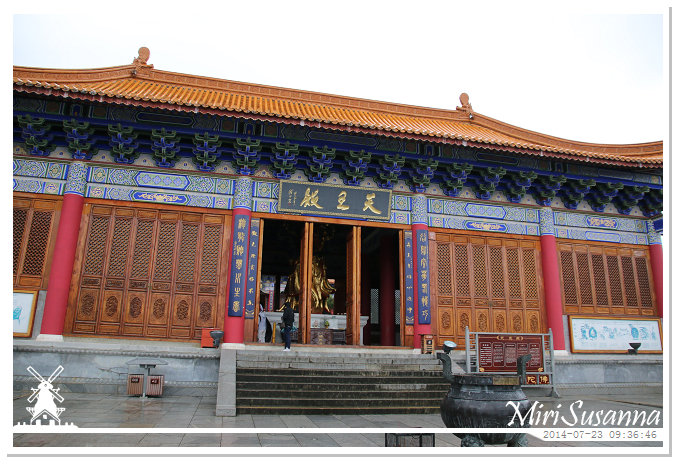
天王殿。
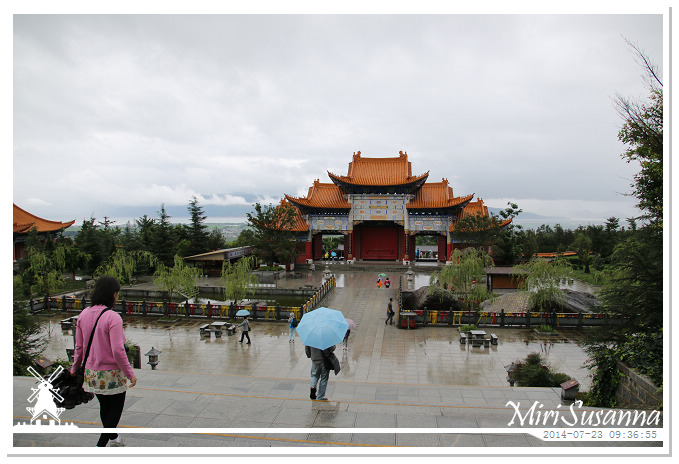

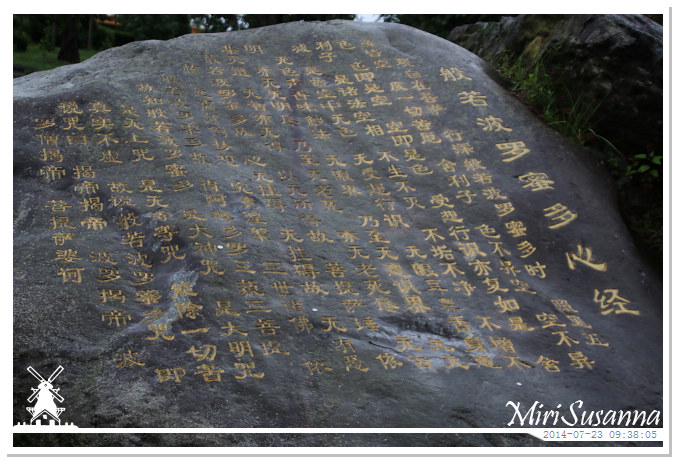


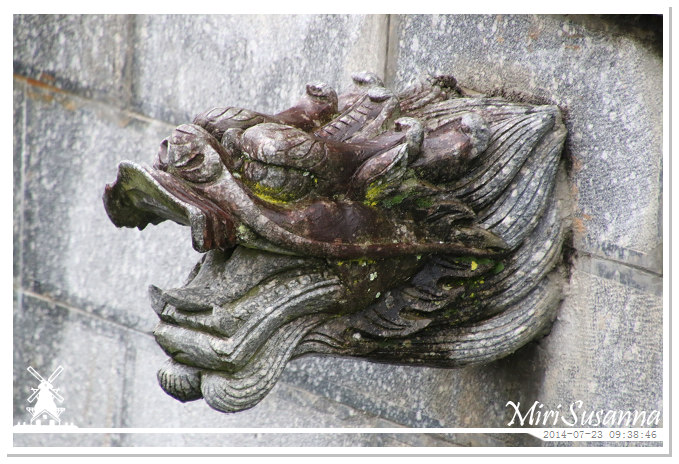

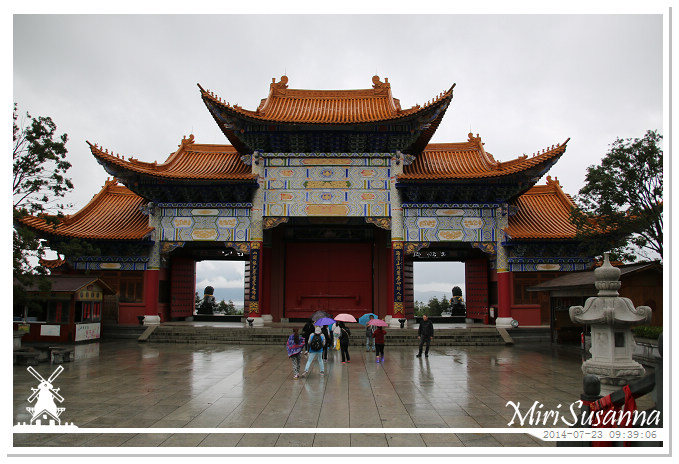
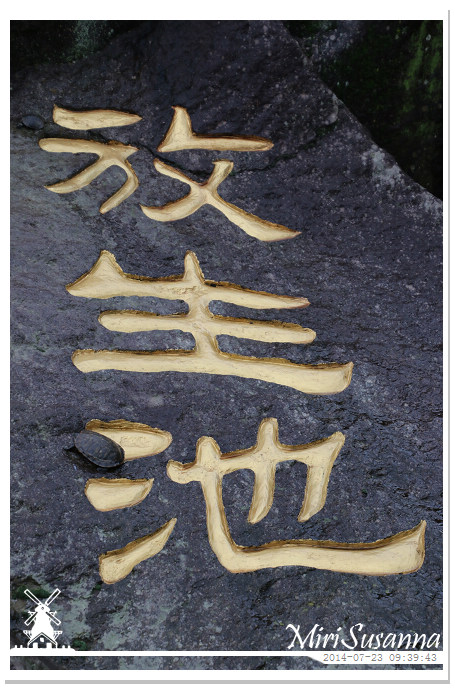
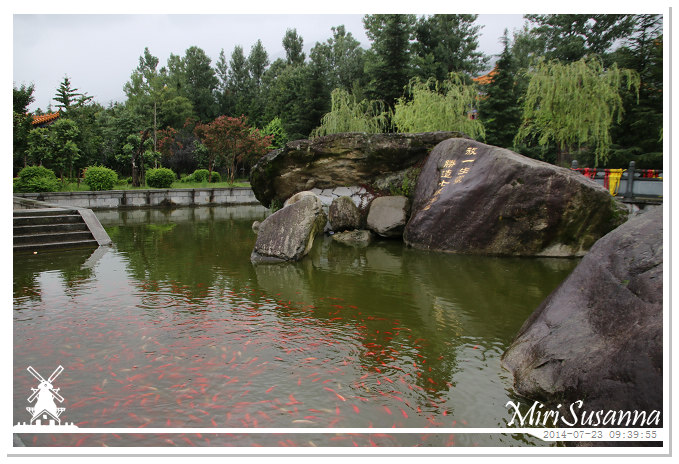
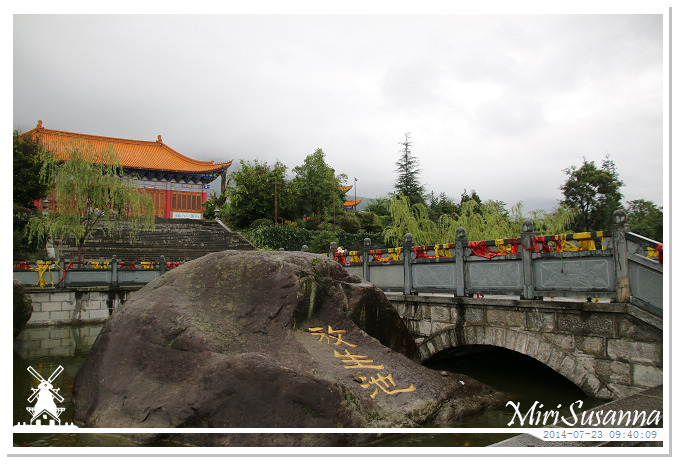
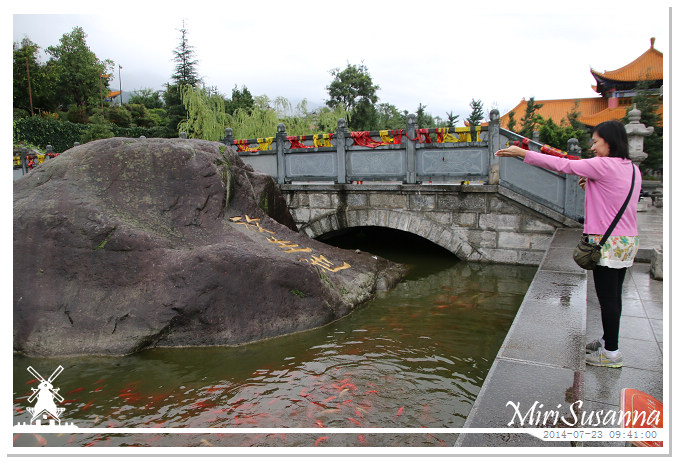

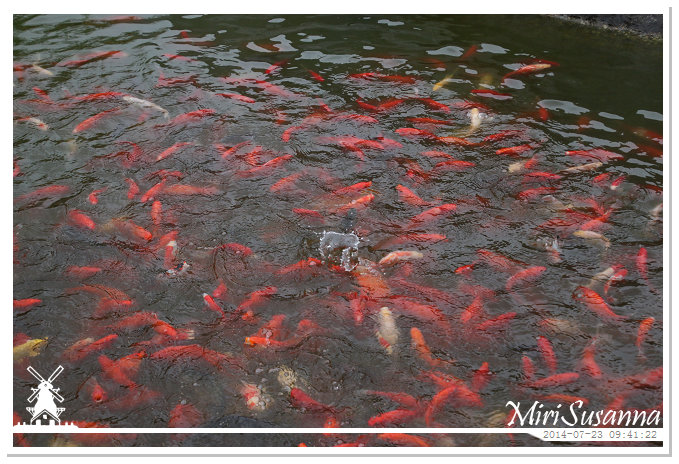
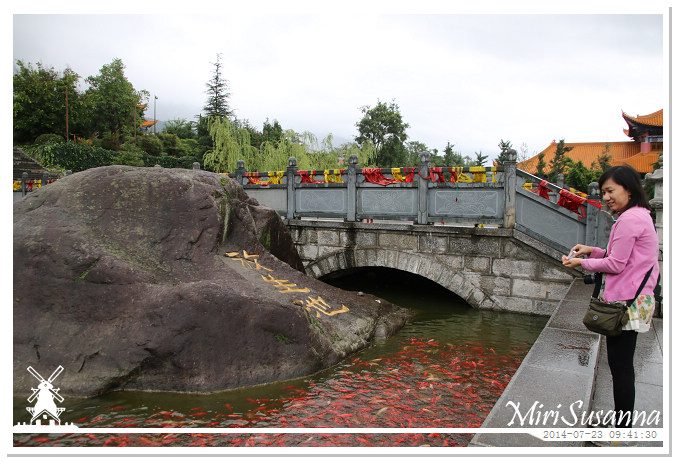




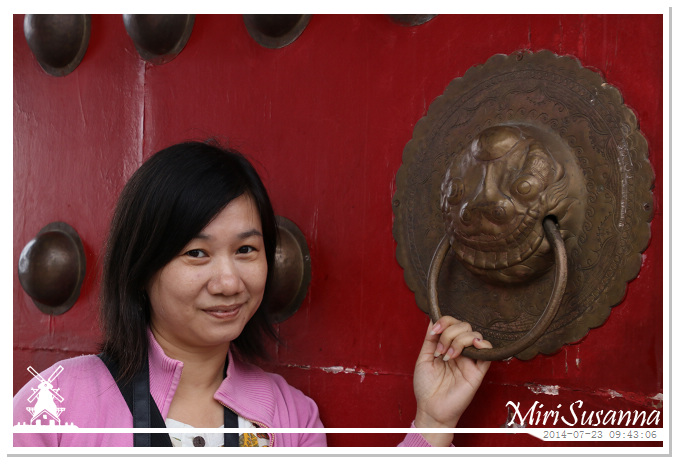
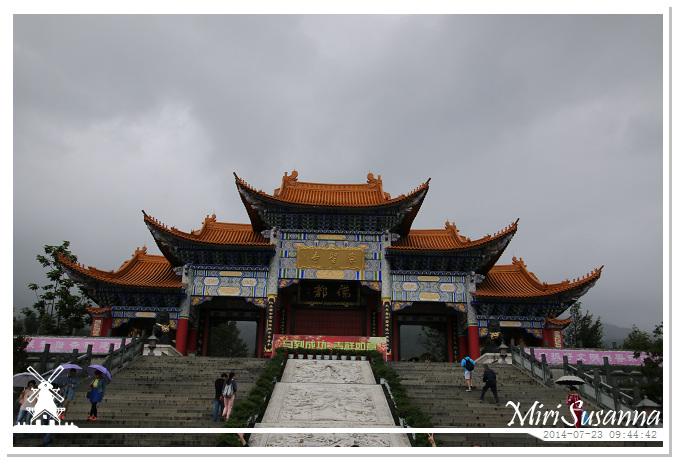
大理國是佛國,崇聖寺即是佛都。
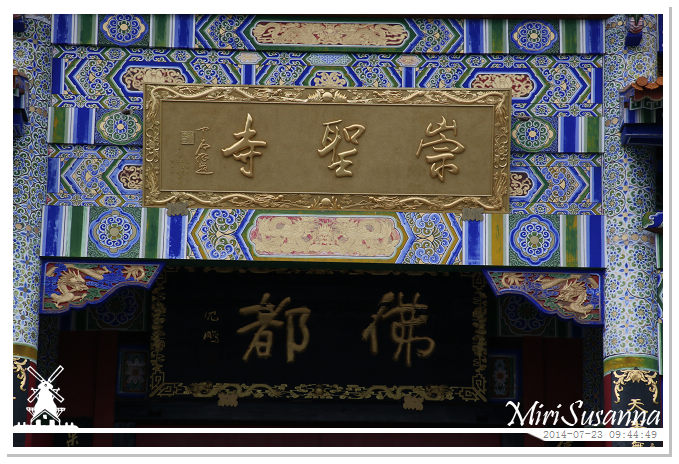

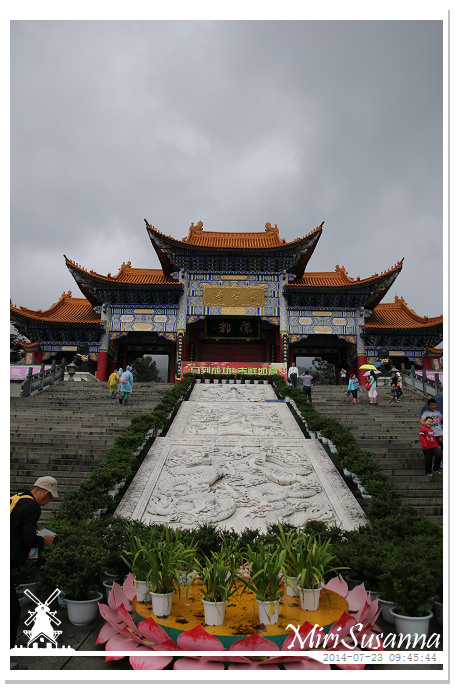

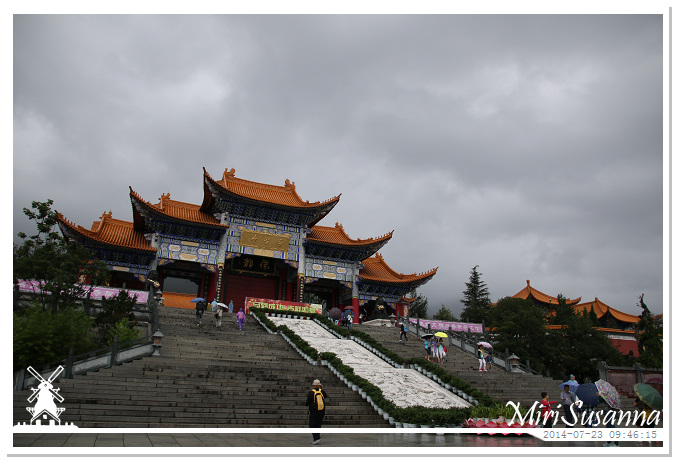


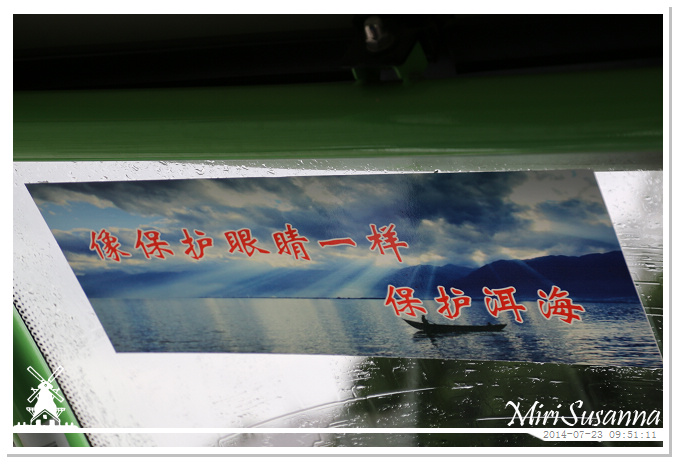
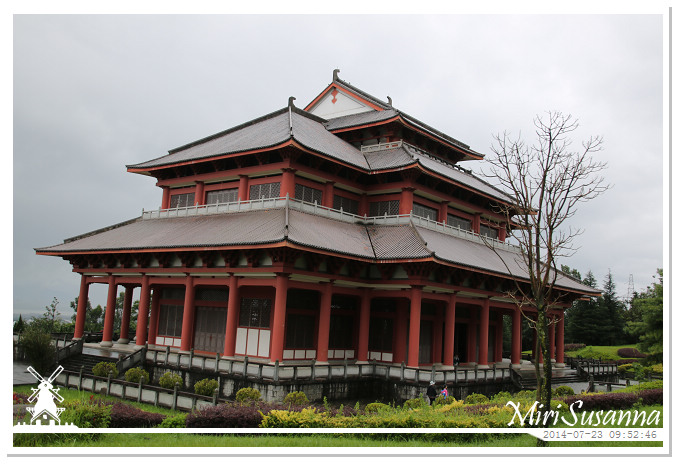
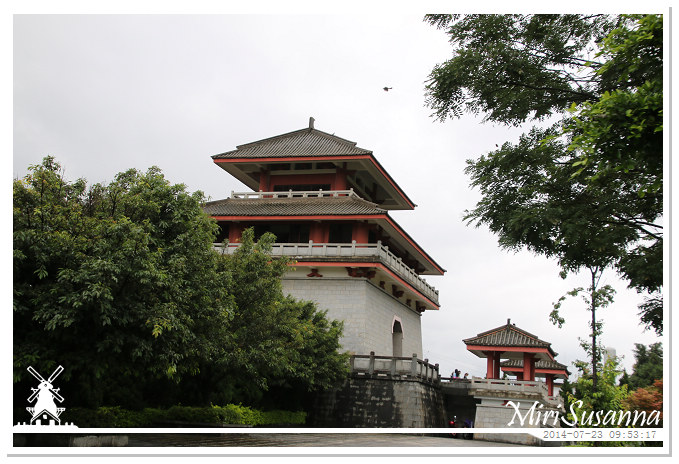

兩小一大的三塔,中間的大塔為千尋塔,左右為南北小塔。
The middle one is Qianxun Pagoda, the small pagodas are north and south pagoda.

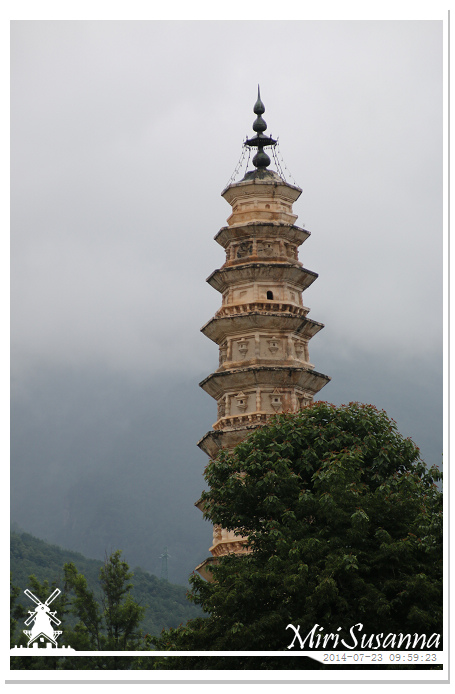


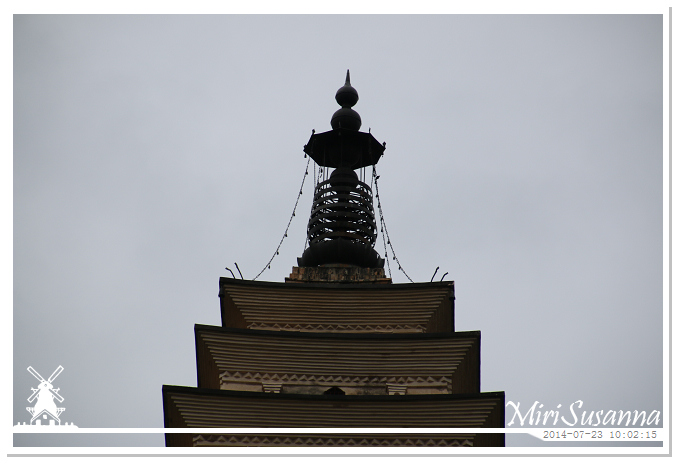

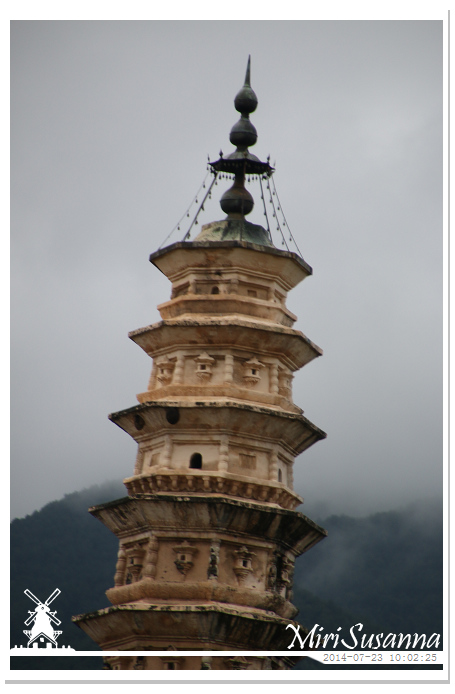
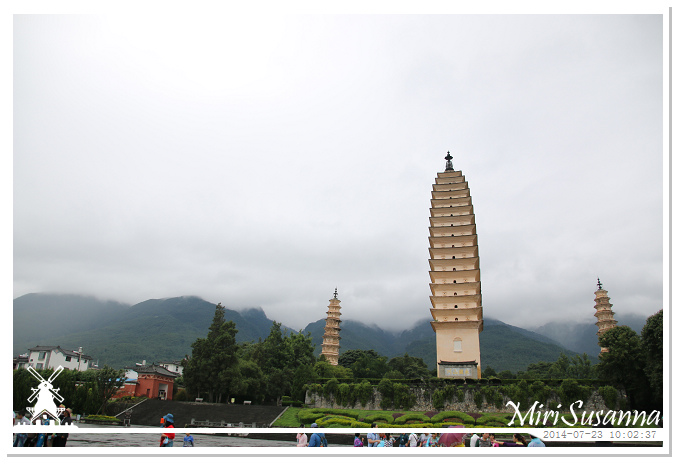


崇聖寺三塔介紹(取自雲南中青國際旅行社,連結:
http://www.yunnaninfo.com/chinesebig5/yunnan/dali/attraction/santa.htm)
崇聖寺三塔位於大理古城北1.5公里處,東對洱海,西靠蒼山。寺中立塔,故塔以寺名。崇聖寺,也就是我國明代旅行家徐霞客在《滇遊日記》中所寫的三塔寺和現代武俠小說大師金庸在《天龍八部》中所寫的天龍寺。崇聖寺的壯觀廟宇在鹹同年間燒毀,只有三塔完好地保留下來。
崇聖寺三塔,由一大二小組成。大塔又叫千尋塔。千尋塔與南北兩個小塔的距離都是70米。
千尋塔高度是69.13米,為方形密簷式空心磚塔,一共有16級,屬於典型的唐代建築風格。塔身內壁垂直貫通上下,設有木質樓梯,可以登上塔頂從瞭望小孔中欣賞大理古城全貌。千尋塔矗立在兩層高大的台基上,塔前朝東的照壁上大家所見的“永鎮山川”這四個蒼勁有力的石刻漢字,每字高1.7米,為明黔國公沐英之孫沐世階所寫。之所以寫這四個字,原因有兩種說法:一種說法是大理地區歷史上水患多,惡龍作怪,因此要治水就要先治龍,可龍唯獨只尊敬塔畏懼大鵬。因此只要塔和塔上的大鵬金翅鳥存在,龍就不敢作惡,水患當然也就減少了。另一種說法是,明朝時,地處邊疆的大理地區已成為其版圖,為了充分表達對這塊版圖的堅守之意,在屹立不倒的塔基上“題字刻碑”就再合適不過了。
千尋塔開始修建的時間一般認為是南詔勸豐佑時期(西元823年∼859年)。修建千尋塔的方法傳說有多種,其中的一種叫“土層掩埋法”,也就是由塔基開始,每修好一級塔,就用土層掩埋一級,並把土堆壓成一個斜坡形的土檯子,這樣就大大方便了運送建築材料和修建上一級塔,等到大塔封頂時,土台的斜坡已延伸數裡遠,接下來又一層一層地挖去埋塔的土層,直到完全顯露出整座塔。
三塔中,南北兩座小塔高度相同,都是42.19米,各有10級,是一對八角形密簷式磚塔,八層以上為實心,八層以下則為空心。外觀輪廓線象錐形,屬典型的宋代建築風格。根據相關史料推斷,南北小塔建造于大理國段正嚴、段正興時期(西元1108∼1172年)。現在我們看到的兩座小塔已偏離了垂直線,出現了令人擔憂的傾斜狀態,但大家不用擔心,因為它們就這樣已經傾斜了四百多年。
如果仔細仰望三塔,我們不難發現,千尋塔每級四面都有拱形龕,也就是常說的供奉神佛的小閣子。相對的兩龕內供有佛像,另外兩龕則作為窗洞直通塔心。而南北小塔,每級的八方都有形狀各異的塔形龕,各層塔身都有浮雕作為裝飾。崇聖寺三塔的級數都為偶數,而其他地方佛塔的級數一般都是奇數。
崇聖寺三塔,從修建至今,除經歷上千年風吹雨打和日曬之外,還經歷過30余次強地震的考驗。其中,明朝正德年間的大地震,大理古城房屋絕大部分倒塌,千尋塔也折裂如破竹,可十天后竟奇跡般自行複合如初。1925年的大地震,城鄉民房倒塌達99%,可千尋塔只震落了頂上的寶刹。這對於沒有石基而直接在土基上修建的三塔來說無疑是一個奇跡。
崇聖寺及三塔建成後至明代,寺院保存完好。史料記載其規模基方七裡,三閣七樓九殿,房屋八百九十餘間,有佛一萬一千四百尊。大理國時曾有九個國王禪位為僧,任崇聖寺住持。在佛教盛行的大理國時期,百姓不論貧富,家家戶戶都有佛堂;不論男女老少,都手不釋數珠,因此大理國有“佛國”之稱。而崇聖寺又有“佛都”之譽,即所謂“南中梵刹之勝在蒼山洱水,蒼山洱水之勝在崇聖一寺”,而寺中的三塔、鴻鐘、雨銅觀音、證道歌碑和佛都匾、三聖金像,被視為五大重器–五大寶物。直到明代,李元陽組織重修崇聖寺時,寺中五寶還保存完好。南詔建極十二年(西元871年)所鑄造的寺內鴻鐘,徐霞客曾在《滇遊日記》中這樣寫道:“鐘極大,徑可丈餘,而厚及尺,其聲聞可八十裡。”因而“鐘震佛都”;,曾成為大理著名的十六景之一。寺內的雨銅觀音,莊嚴靜美,細腰赤足,造型精妙。相傳在殿內鑄造高三丈的觀音,鑄到一半時銅已用完,這時天上下了一場銅雨,人們便收集這些如珠銅雨才鑄完了觀音,故名雨銅觀音。寺內的巨鐘後來毀于清咸豐同治年間,雨銅觀音毀于十年文革,證道歌碑和佛都匾毀壞時間不詳。現在寺內的鐘樓和雨銅觀音殿是近年才重新修建的。重鑄的建極大鐘,由北京古鐘博物館據史料設計,由南京晨光機器廠鑄造。鐘高3.86米,直徑2.138米,重16.295噸。目前為中國第四大鐘,雲南第一大鐘。
1961年3月,崇聖寺三塔被國務院公佈為第一批全國重點文物保護單位。1978年至1981年,國家文物局撥款43萬元對三塔進行了歷時三年的維修與加固。在這次維修與加固中,有兩項重要發現:一是三塔的基腳不是石基而是土基,二是清理出佛像、寫本佛經等珍貴文物680餘件,這是迄今為止發現的最豐富、最重要的一批南詔、大理國時期的文物。這些文物成為研究南詔和大理國歷史的實物資料。在南詔和大理國時期,藏傳佛教、印度密教和禪宗(中原地區)等宗教文化曾在大理得以交匯與融合。
雄奇的崇聖寺三塔還在80年代衍生出一個三塔倒影公園。公園占地27畝,有水面積達十餘畝。公園坐北向南,背靠一公里許的崇聖寺三塔,以園內的潭水能非常清晰地倒映出三塔丰姿而得名。園內建築有體現白族民居的楹聯照壁,有題詩刻賦的大理石碑亭,有影搖水中的漾波亭。園內各種、緬桂、杜鵑等眾多異草奇花。遊人置身三塔倒影公園,或吟誦詩詞楹聯,或觀賞百草花卉,或凝神水中三塔,或攝影留念佳景,都少不了陶然自得,以至流連忘返。三塔倒影,不僅妙在陽光燦爛的白天,而且還妙在月光如水的夜晚。
崇聖寺三塔和三塔倒影公園互為添輝,相與增色,從而成為最能代表大理形象的重要人文景觀。
THREE PAGODAS ON THE RUINS OF CHONGSHENGSI MONASTERY
(http://www.travelchinayunnan.com/city/dali/attraction/triplepagodas.htm)
The Three Pagodas are located at the foot of Yingle Peak of Cangshan Mountain at the northwest suburb of Dali Ancient City. In the time of Nanzhao and Dali Kingdoms, Chongshengsi was the largest monastery in this area and the Three Pagodas were only a part of it. Now, the monastery has long disappeared and only the Three Pagodas remain.
Between Cangshan Mountain and Erhai Lake, the Three Pagodas stand like the legs of a huge tripod. Qianxun Pagoda, the main one, is square-shaped with closed eaves similar to Xiaoyan Pagoda in Xi’an. It has 16 tiers with a total height of 69.13 metres, and is in a typical architectural style of the Tang Dynasty. At the basement of the pagoda are engraved four Chinese Characters “YONG ZHEN SHAN CHUAN” (meaning everlasting sovereignty and peace) in the handwriting of Mu Shijie, grandson of Mu Ying, the Senior Duke of Qian of the Ming Dynasty. It was first built in the era of Fengyou Emperor of Nanzhao Kingdoms about the same time of the Tang Dynasty. On the south and north sides of the main pagoda stand two smaller ones of octagonal shape with dosed eaves. Each one has 10 tiers with a height of 43 metres. On the top of each pagoda, there are three copper-made calabashes, each connected with an umbrella shaped bronze bell. They were constructed during the period of the Five Dynasty (907-906), slightly later than the main one. The cover of Qianxun Pagoda is white-washed. On each story, there are four shines. There are Buddhist sculpture on the east and west shrines. The other two shrines are the windows for the pagoda. There are wood beams inside the pagoda. Along stairs inside, one can reach the top. There are four corners on the summit. Each corner hangs a golden wing bird cast by copper. Legend has it that these birds have spell on the demons in Erhai Lake. On the summit of the pagoda, there are also metal pagoda top, pagoda cover, pagoda peak and a golden cock. On the base of the pagoda, there is a epigraph: The Ruler of Mountains and Rivers. There are pillars at very corner and platform on each story. On the fourth and sixth floor, there are embossed, and golden were there, so splendid.
During the renovation in 1979, more than 600 pieces of cultural relics were discovered, including hand-written Buddhist scriptures, books, engraved bronze plates, bronze mirrors, statues of Buddha made of gold, silver, bronze, iron, porcelain, jade, and quartz, and medicinal herbs. Up to now, they constitute the largest store of relics of Nanshao and Dali Kingdoms ever found, providing sure proofs of the influence of the Han culture upon minority nationalities in the border areas.
The bell tower behind the Three Pagodas was set up in 1997. A jianji Bell hangs from the upper part of the building. It sounds louder when one taps on it with mighty power. One can hear the voice from the other world. This is one of 16famous scene in Dali – The Bell Shapes the Capital of Buddhist.
Weathering through the storms and earthquakes in the past to 10 centuries and more, the Three Pagodas still elegantly stand there. They are the symbols of outstanding architectural technology, the wisdom of the ancient labouring people and the brilliant culture of Dali.